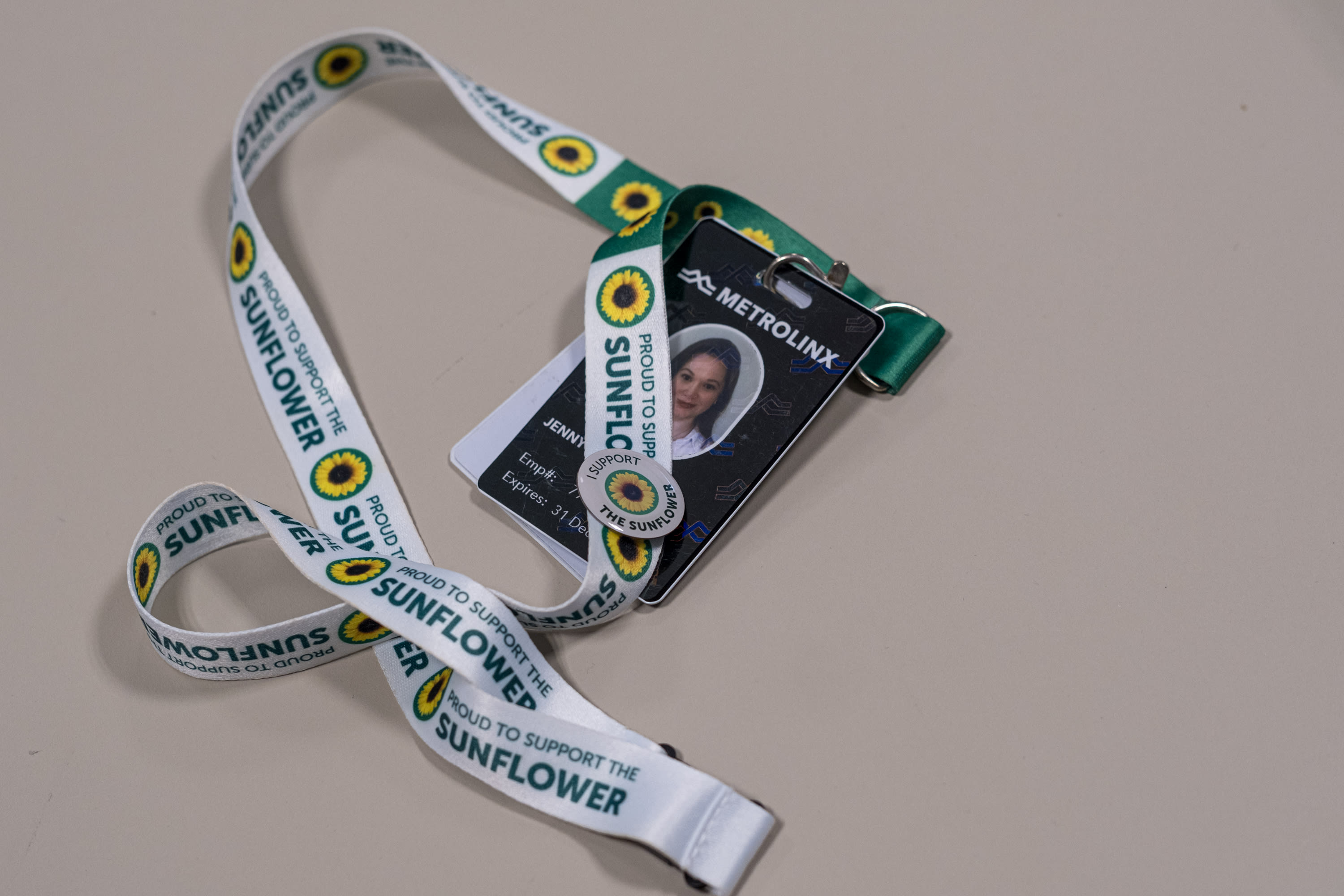Share
Metrolinx Careers: Universal Design Manager Jenny H.
Get to know the team responsible for our Multi-Year Accessibility Plan.
Jan 8, 2025
Metrolinx’s Multi-Year Accessibility Plan (MYAP) went into effect on January 1, 2025. The five-year plan is a public-facing roadmap for meeting our obligations under the Accessibility for Ontarians with Disabilities Act (AODA), and for preventing and removing barriers to accessibility across Metrolinx so that all customers have equal access to GO Transit, UP Express, and PRESTO services.
The development of the MYAP and its subsequent annual status reports are created and owned by our Universal Design team, which also conducts design reviews for all modes of transport – GO, UP, LRT and new subways.
“I have always worn an artificial leg and I don't drive. I rely very heavily on public transit, so for me, being able to apply my accessibility background to public transit is a huge opportunity,” says Jenny H., a Universal Design Manager at Metrolinx.
Jenny completed her undergrad in the history of science, followed by an Orthotic and Prosthetic Technician diploma at George Brown College. She started her career as a custom seating technician for high-technology wheelchairs and held various positions related to built-environment accessibility before completing the Accessible Media Production program at Mohawk College. From there, she worked in accessibility policy and planning at the City of Toronto before joining Metrolinx 11 months ago.
“To date, my job has been very much tied to the new MYAP,” Jenny explains. “It started with a lot of analysis and understanding our current activities and the feedback we receive through the Accessibility Advisory Committee, the public meeting and other channels, then trying to digest that feedback in a way that can be implemented at Metrolinx, tying it to our policies and design requirements, finding the right people to connect to that insight and building it into future plans.”
Jenny completed her undergrad in the history of science, followed by an Orthotic and Prosthetic Technician diploma at George Brown College. (Metrolinx photo)
The MYAP has two main functions: It’s a five-year plan for sustaining and improving accessibility, and a structure for reporting out to the public for the next five years as we enhance accessibility on our transit systems in the region. To do that, initiatives have been developed under four main pillars and include updated policies and training for staff, better accessibility information sharing with customers, improving design decisions for repairs, renovations and new construction through research and consultation, as well as taking advantage of more opportunities for coordinating with partner organizations and other transit agencies.
“Our colleagues across the whole organization, from digital to the people pouring concrete, are working on accessibility all the time whether it’s in their job title or not,” Jenny says. “I'm proud of the MYAP work. Plans may not be very flashy, but it's organization-wide and the kind of stuff that over five years will have a lot of impact.”
In addition to owning the MYAP, the Universal Design team works on numerous ongoing projects, including conducting hundreds of design reviews for projects at all planning and construction stages. The team owns Metrolinx’s Universal Design Standard (DS-02) and, perhaps most importantly, acts as a voice for customers with disabilities.
“When people encounter barriers in their travels, they'll very much notice them. We receive complaints and feedback and try to get them in front of the right people. If it's something that’s a more straightforward fix, like a bad curb, we try to prioritize that,” Jenny says. “Some feedback requires longer-term work, like a standard or policy update. And it’s often hard to put a spotlight on the good stuff that's happening because often really good accessibility, universal design, is folded into everything else and therefore it can be seamless or go unnoticed.”
In 2023, Metrolinx joined the Hidden Disabilities Sunflower program, which started in the U.K., to support people with invisible disabilities. Customers on GO Transit and UP Express can choose to wear a sunflower pin or lanyard to let staff know they require additional support.
“You may not be showing up with a guide dog or a wheelchair [or other visual cues for staff], but you've got the sunflower that indicates you've got invisible disabilities,” Jenny explains. “You might need different communication, or a little extra time or consideration. It’s been really well received.”
In 2023, Metrolinx joined the Hidden Disabilities Sunflower program, which started in the U.K., to support people with invisible disabilities. (Metrolinx photo)
Now that the MYAP has launched, Jenny’s team will be responsible for tracking the 30+ initiatives outlined in the report, running the Accessibility Advisory Committee and public meetings, and supporting staff across the organization so they can better meet the needs of customers with disabilities, including through extensive technical reviews. While those tasks are daunting and always ongoing, Jenny focuses on the effect that even small decisions her team makes can have across Metrolinx’s entire customer base.
“Any win for accessibility and universal design will have such a huge impact for people with disabilities across the whole region.”
